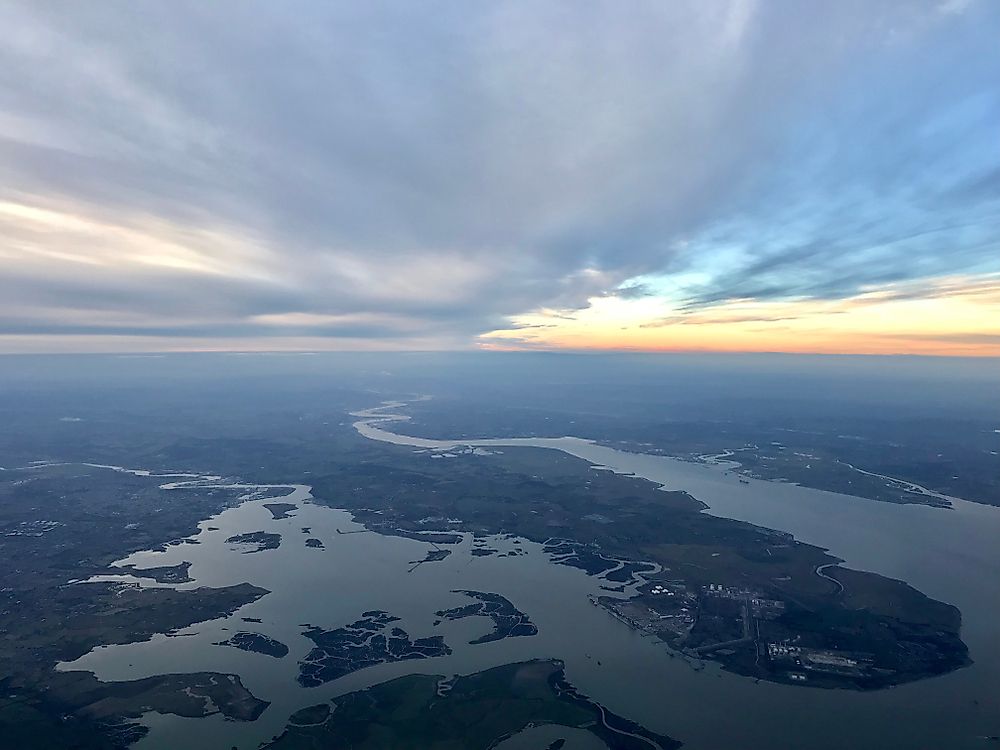What Is An Estuary?

What Is An Estuary?
An estuary is a place along the coast where both fresh and salt water meet. Typically, estuaries occur where the river meets the sea and are partially enclosed. This mixing of water provides an environment rich in nutrients, and therefore estuaries are considered among the most productive ecosystems in the world. Although estuaries are productive, they suffer massive challenges. Approximately 60% of the human population lives along estuaries. This encroachment has led to the degradation of waters with factors such as sedimentation, overfishing, eutrophication, and pollution by heavy metals. An estuary can also be termed as a harbor, lagoon, bay, inlet, sound, wetland and swamp. Estuaries are protected from massive ocean forces by coral reefs in most cases.
Types Of Estuaries
There are four well-known types of inlets and they include bar-built estuaries (a protected shallow lagoon), coastal plain estuaries (formed by a rising sea level), tectonic estuaries (through folding and faulting), and Fjords and rias.
Estuarine Ecosystems
Both ocean and land make up this unique environment. It is a source of nutrients for millions of plants and animal species. Estuarine ecosystems propel nourishment to the surrounding organisms for example fish, lobsters, reeds, algae, mangroves, and phytoplankton. They are rich in organic matter, and this provides an opportunity for photosynthesis to take place in water. Complicated organic matter presents releases ammonia, phosphates and nitrates through decomposition by micro-organisms. These in turn act as food for burrowing invertebrates like crabs and shellfish. Sharks use these ecosystems as pupping grounds and bear young ones in them (where they feed and grow to maturity).
Importance Of Estuaries
Estuaries exhibit economic, ecological and cultural values. Breakdown of organic matter by microbes helps to maintain good water quality, with pollutants trapped by sediments. They play a significant role in balancing biodiversity of organisms such as fish, mammals and other wildlife. Migratory birds also use estuaries to rest and eat. Estuaries have many economic values such as acting as tourist destinations, maintaining water quality for humans and animals, maintaining biodiversity, for commercial fisheries and working as a buffer between land and the water body. Estuaries pose a tremendous cultural value such as offering learning opportunities, scientific knowledge and add the aesthetic value of a place. They also provide excellent recreational opportunities such as surfing, swimming, fishing, boating and bird watching. Estuaries are rich in resources which generate positive lifestyles and they are irreplaceable.
Reasons For Protecting And Preserving Estuaries
There is a need to protect and defend estuaries since they are regions for human settlement (every human being deserves conducive living conditions). Any form of pollution in the bay destroys plant and animal populations. A variety of species of organisms depend on estuaries for survival. Minimizing the use of fertilizers in farmyards and treating domestic and industrial wastewater are some ways of protecting estuaries. On the other hand, state agencies should implement strict legislation to curb degradation of estuaries.











